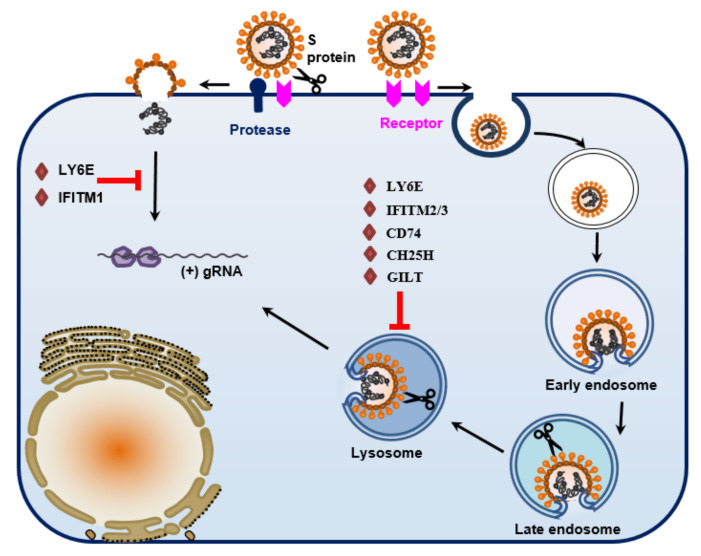Figure 1.
Schematic model for cell entry process of coronaviruses. The virus entry process is initiated by cell binding, which is mediated by the interaction between the viral spike (S) protein and cellular receptor and/or attachment factor, followed by membrane fusion and release of the viral genome into the cytoplasm for replication. Membrane fusion occurs at the plasma membrane (early entry) in a pH-independent manner or in endosome/lysosome compartments (late entry), in a pH-dependent manner, or both. Proteolytic cleavage of the S protein is a critical priming step for membrane fusion. Cleavage can occur at the plasma membrane by TMPRSS2 or trypsin or in the endosome/lysosome by cathepsin. Membrane fusion occurring at the cell surface could be inhibited by interferon-inducible host proteins LY6E and IFITM1. Membrane fusion in the endosome/lysosome can be restricted by several other interferon-inducible proteins, including LY6E, IFITM2, IFITM3, CD74, CH25H, and GILT.

